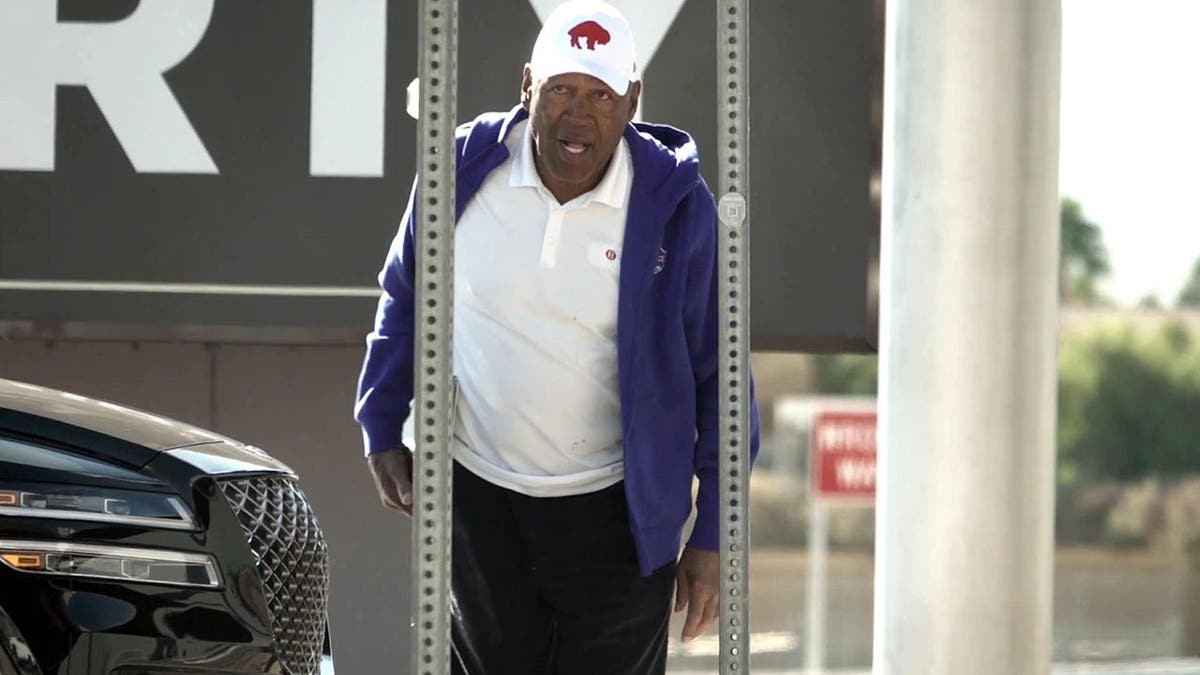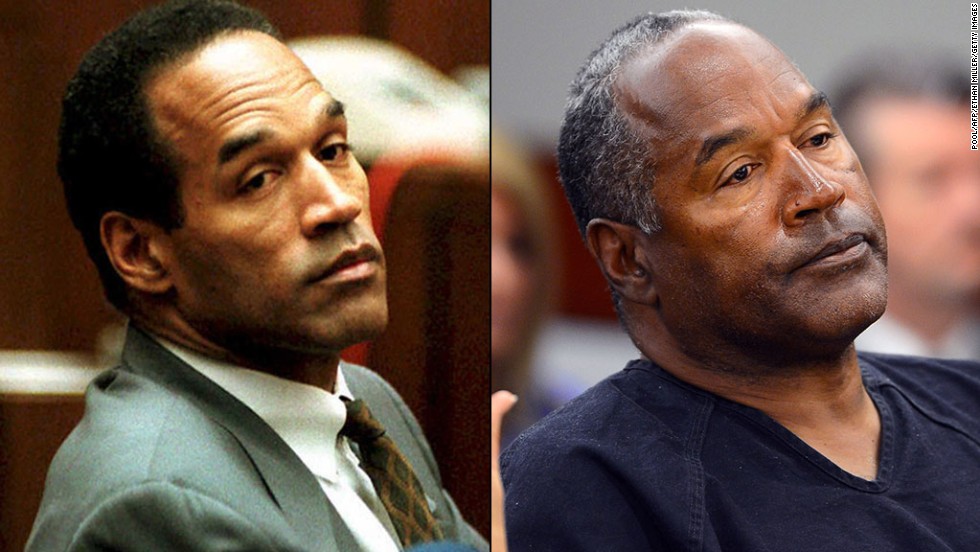The infamous OJ Simpson trial remains one of the most talked-about legal cases in modern history. The question "Did OJ kill Nicole and Ron?" has sparked debates for decades, leaving many people divided on the truth behind the murders of Nicole Brown Simpson and Ronald Goldman. This article delves deep into the case, examining the evidence, legal proceedings, and public perception surrounding this high-profile tragedy.
The OJ Simpson case not only captivated the nation but also raised significant questions about the justice system, race relations, and media influence. As we revisit this case, we aim to provide a comprehensive analysis of the facts and circumstances that led to the trial and its aftermath.
Through detailed examination and credible sources, we will explore the events surrounding the murders, the evidence presented during the trial, and the lasting impact on society. Whether you're a long-time follower of the case or new to the story, this article aims to shed light on the complexities involved.
Read also:Mary Burke Nacked An Indepth Exploration Of The Controversial Topic
Table of Contents
- Background of the Case
- Biography of OJ Simpson
- Evidence Presented in the Trial
- Trial Proceedings and Key Moments
- Analysis of the Verdict
- Public Opinion and Media Influence
- Legal Implications and Controversies
- Psychological Aspects of the Case
- The Aftermath of the Trial
- Conclusion and Final Thoughts
Background of the Case
The murders of Nicole Brown Simpson and Ronald Goldman occurred on June 12, 1994, in Brentwood, Los Angeles. The brutal killings sent shockwaves through the nation, as Nicole was the ex-wife of former NFL star OJ Simpson. The crime scene investigation revealed disturbing details, including bloodstains and a bloody glove found near the bodies.
Law enforcement quickly focused their investigation on OJ Simpson due to his tumultuous relationship with Nicole and the circumstantial evidence linking him to the crime. The subsequent arrest and trial became a media spectacle, drawing unprecedented attention from both the public and the press.
OJ Simpson's arrest on June 17, 1994, following a dramatic low-speed chase, marked the beginning of one of the most publicized trials in American history.
Biography of OJ Simpson
Before delving into the details of the case, it’s essential to understand the life and career of OJ Simpson. Born on July 9, 1947, in San Francisco, Simpson rose to fame as a legendary football player and later transitioned into acting and sports commentary.
Early Life and Career
OJ Simpson grew up in a working-class neighborhood in San Francisco. Despite facing challenges, he excelled in sports, particularly football. His outstanding performance at the University of Southern California (USC) earned him the Heisman Trophy in 1968, cementing his status as one of the greatest college football players of all time.
Professional Achievements
After joining the Buffalo Bills in 1969, Simpson became the first NFL player to rush for over 2,000 yards in a single season. His achievements in football earned him numerous accolades and a place in the Pro Football Hall of Fame.
Read also:John Bonham The Legend Behind The Drums
| Full Name | Orenthal James Simpson |
|---|---|
| Date of Birth | July 9, 1947 |
| Place of Birth | San Francisco, California |
| Profession | Former NFL Player, Actor |
| Marital Status | Divorced |
Evidence Presented in the Trial
The prosecution built its case against OJ Simpson using a combination of physical evidence, witness testimonies, and forensic analysis. Some of the key pieces of evidence included:
- Bloody gloves found at both the crime scene and Simpson's estate.
- A trail of blood leading from the crime scene to Simpson's home.
- Witness accounts placing Simpson near the scene of the crime.
- Forensic evidence linking Simpson to the murders.
Despite the seemingly overwhelming evidence, the defense team, led by the renowned "Dream Team," effectively challenged the credibility and handling of the evidence.
Trial Proceedings and Key Moments
The trial, which began in November 1994, lasted for nearly a year and became a defining moment in American legal history. Key moments included:
Opening Statements
Both the prosecution and defense delivered compelling opening statements, setting the stage for the dramatic courtroom battles that followed.
Key Witnesses
Testimonies from witnesses such as Kato Kaelin, Marcia Clark, and Johnnie Cochran played crucial roles in shaping public perception and influencing the jury's decision.
Closing Arguments
The closing arguments highlighted the strengths and weaknesses of both sides, with the defense focusing on perceived flaws in the investigation and evidence collection.
Analysis of the Verdict
On October 3, 1995, the jury delivered its verdict: OJ Simpson was acquitted of the murders of Nicole Brown Simpson and Ronald Goldman. The decision shocked many, as it contradicted the weight of evidence presented during the trial.
Experts have analyzed various factors contributing to the verdict, including jury selection, courtroom dynamics, and the effectiveness of the defense strategy. The "Dream Team" successfully raised doubts about the prosecution's case, emphasizing potential contamination of evidence and racial bias within the LAPD.
Public Opinion and Media Influence
The OJ Simpson trial not only influenced the legal system but also shaped public opinion and media coverage of high-profile cases. The extensive media coverage, including live broadcasts and round-the-clock updates, brought the trial into millions of households.
Public opinion remained deeply divided, with racial and social dynamics playing significant roles in how people perceived the case. Studies indicate that African American communities were more likely to believe in Simpson's innocence, while white communities predominantly supported the prosecution's case.
Legal Implications and Controversies
The OJ Simpson trial raised important questions about the justice system, including the role of race, media influence, and the reliability of forensic evidence. Critics argue that the trial exposed systemic flaws, while supporters highlight the importance of a fair trial and the presumption of innocence.
Subsequent civil trials found Simpson liable for the deaths of Nicole and Ron, ordering him to pay millions in damages. This duality of legal outcomes further complicates the public's understanding of the case.
Psychological Aspects of the Case
Understanding the psychological dynamics of the case provides valuable insights into the motivations and behaviors of those involved. Domestic violence experts have examined the relationship between OJ Simpson and Nicole Brown Simpson, highlighting patterns of abuse and control.
Additionally, the psychological impact on the victims' families and the broader community underscores the long-lasting effects of such tragedies.
The Aftermath of the Trial
In the years following the trial, OJ Simpson's life took several unexpected turns. He continued to face legal challenges, including a prison sentence for an armed robbery and kidnapping conviction in 2008. His release in 2017 reignited public interest in the case.
Documentaries such as "OJ: Made in America" and "The People v. OJ Simpson" have revisited the case, offering new perspectives and insights into the events that unfolded.
Conclusion and Final Thoughts
The question "Did OJ kill Nicole and Ron?" remains unanswered for many. While the legal system acquitted Simpson, the evidence and circumstances surrounding the case continue to provoke debate and analysis. This article aimed to provide a comprehensive overview of the events, evidence, and implications of one of the most significant trials in modern history.
We invite you to share your thoughts and opinions in the comments section below. For further reading, explore our other articles on legal cases, psychology, and social issues. Together, we can continue the conversation and strive for a deeper understanding of the complexities involved in such cases.


